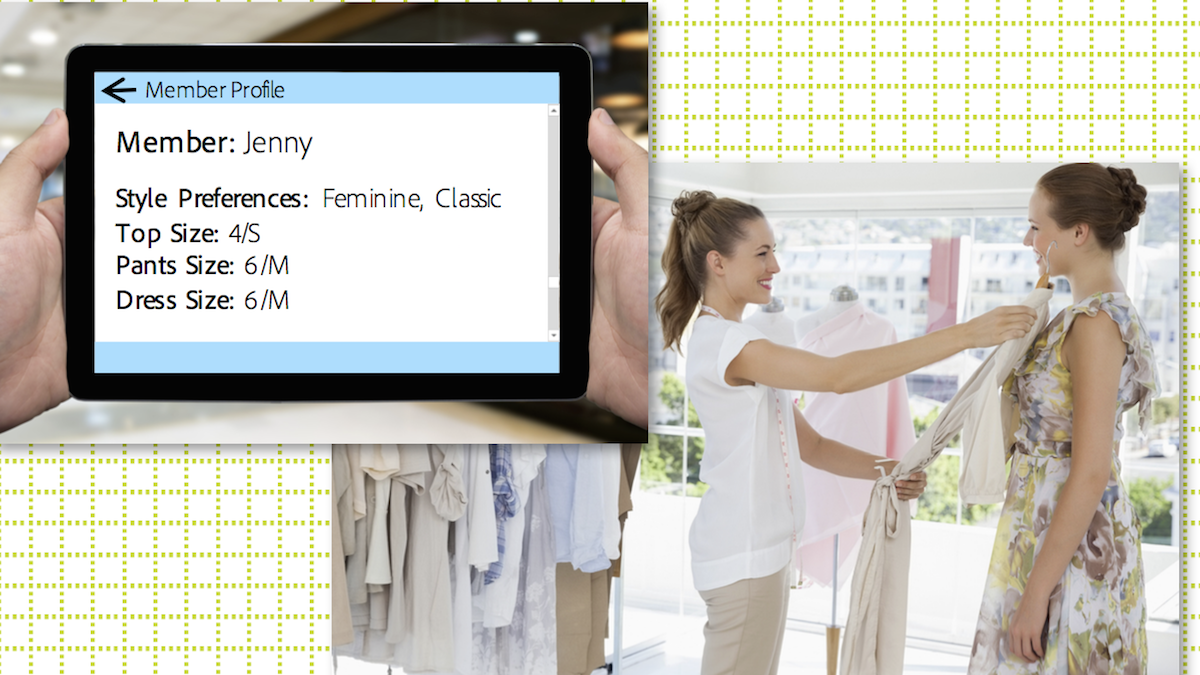Adobe Marketing Cloud adds features, partnerships to bring brick-and-mortar deeper into digital
The announcements highlight the continued evolution of ‘brick-and-bits’ stores.

Image from Adobe
Today at the National Retail Federation (NRF) show in New York City, Adobe announced several new initiatives to improve the digitization of brick-and-mortar retailing.
The tech company says that $7.50 of every $10 spent through the top 500 U.S. retailers is spent through its Marketing Cloud, largely though the retailers’ online selves.
That’s the hottest arena for online sales, according to Marketing Cloud’s Director of Industry Strategy Michael Klein. He told me that ecommerce for brick-and-mortar retailers “is growing faster than pureplay ecommerce.” A key driver: the trend among customers to buy online from retailers with a physical presence, so returns can be made in person.
The new retailer-targeted announcements include the private beta of Fluid Experiences in Retail inside Adobe Experience Manager in the Marketing Cloud.
It allows a retailer to create a master block of content — including photo, product description, sizes and pricing — and then break it into segments for any device that can display HTML, a kind of content management for multiple channels. Previously, creating such multi-use content in the Marketing Cloud required a more manual process for each channel.
Now, the same content can be distributed as part of a campaign to landing pages, digital signage, clienteling apps (apps replacing the “black book of customers” that many store personnel used to have), Pinterest, and — new to this release — point-of-sale installations in stores and digital shelf labels.
“Most retailers are really faking it,” Klein told me, “not using a single system of record to manage, [but instead] using a wide array of point solutions.”
Automated product recommendations
There are also now automated product recommendations in Adobe Target. Klein said algorithms have been re-written to utilize Adobe’s new Sensei artificial intelligence layer and to “better recognize omnichannel behavior,” such as in-store shopping behavior.
He pointed to Netflix’s DVD recommendations for its users, which might differ from its streaming recommendations — just as online recommendations might differ from ones for physical stores.
Shoppers can also now opt-in and provide personal info to a retailer for quicker shopping, such as clothing size or preferences in home furnishings.
And there is now a tighter integration between Adobe Dreamweaver and the Marketing Cloud’s Campaign component. It turns out, Adobe said, that about half of marketers start building their email campaigns in Dreamweaver — a curious choice, since Dreamweaver is better known as a multimedia and website tool.
The new integration makes it easier for marketers to follow this work process because there is now an automatic syncing with Campaign, although this particular enhancement doesn’t offer anything that is retailer-specific.
New partnerships
In addition to those feature additions, Adobe is also unveiling several interesting partnerships.
It is working with Memomi to add more intelligence to its Magic Mirror, an interactive mirror for physical shops. As Klein noted in his blog post:
“As people interact with the mirror, it becomes ‘smarter,’ offering shoppers customized experiences. Content is delivered by AEM [Adobe Experience Manager] and measured and optimized with Adobe Analytics (AA) and Adobe Target — all without requiring heavy-lifting from IT. A shopper can try on a winter coat, for example, record a 12-second video, and see how it looks from all angles. The retailer can then track whether the shopper purchased the item and offer suggestions — such as a matching pair of winter boots — based on their preferences.”
A new partnership with Commerce Tools is providing a transactional service to the Adobe platform, which doesn’t have one. Commerce services would otherwise be a potential hole in Adobe’s retail strategy, especially now that major competitors like Salesforce have their own Commerce Cloud.
Commerce Tools offers micro-services, which are small applications that can be connected via application programming interfaces (APIs) to point-of-sale displays, interactive mirrors, or any other connected screens, offering a mix-and-match approach to purchasing, chat, voice interaction and other commerce-based services.
And, not to be outshone by Amazon’s new smart grocery store prototype, Adobe said it is now working with France-based global agency Valtech to make grocery stores more intelligent.
Although there are no products yet to release, the partners are showing at NRF a proof-of-concept demo with such capabilities as taking a photo of a product in a printed store mailer and automatically adding that item to your mobile shopping list.
Contributing authors are invited to create content for MarTech and are chosen for their expertise and contribution to the search community. Our contributors work under the oversight of the editorial staff and contributions are checked for quality and relevance to our readers. MarTech is owned by Semrush. Contributor was not asked to make any direct or indirect mentions of Semrush. The opinions they express are their own.
Related stories